Grow Passion Fruit at Home and transform your backyard into a tropical paradise! Imagine stepping outside and plucking a perfectly ripe, tangy-sweet passion fruit straight from your own vine. Sounds dreamy, right? Well, it’s more achievable than you might think! For centuries, passion fruit has been cherished in South America, not just for its delicious flavor, but also for its purported medicinal properties and vibrant beauty. From refreshing juices to decadent desserts, this exotic fruit has graced tables and tantalized taste buds across the globe.
But why should you bother with growing your own? Let’s face it, store-bought passion fruit can be expensive and sometimes lack that intense, fresh flavor. Plus, there’s something incredibly rewarding about nurturing a plant from seedling to fruit-bearing vine. In this DIY guide, I’m going to share my tried-and-true secrets and simple hacks to help you successfully grow passion fruit at home, even if you don’t have a green thumb. We’ll cover everything from choosing the right variety and providing the perfect growing conditions to tackling common pests and diseases. Get ready to embark on a fruitful adventure – literally!
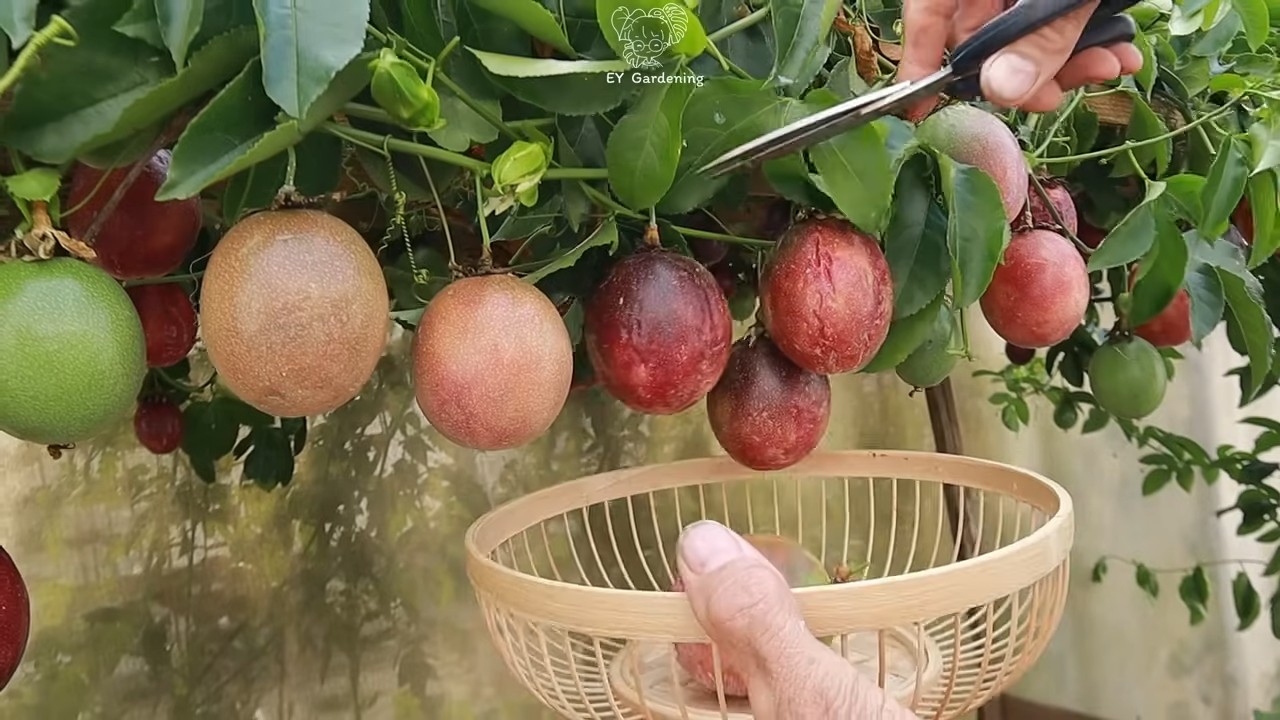
Grow Your Own Passion Fruit Paradise: A DIY Guide
Hey there, fellow plant enthusiasts! Ever dreamt of sipping on a refreshing passion fruit juice made with fruit you grew yourself? Well, dream no more! Growing passion fruit at home is totally achievable, even if you don’t have a sprawling garden. I’m going to walk you through everything you need to know, from choosing the right variety to harvesting your delicious bounty. Let’s get started!
Choosing Your Passion Fruit Variety
Before we dive into the nitty-gritty, let’s talk about varieties. Not all passion fruit are created equal! Some are better suited for certain climates, and some have different flavor profiles. Here’s a quick rundown:
* Purple Passion Fruit (Passiflora edulis): This is probably the most common variety you’ll find. It’s known for its tart, aromatic flavor and is relatively cold-hardy (down to about 30°F). It’s a great choice for beginners.
* Yellow Passion Fruit (Passiflora edulis flavicarpa): This variety is larger and more acidic than the purple. It’s also more vigorous and disease-resistant, making it a good option for warmer climates.
* Giant Granadilla (Passiflora quadrangularis): As the name suggests, this one produces HUGE fruits! They’re less tart than the other varieties and have a milder flavor. It needs a lot of space and warm temperatures.
* Sweet Granadilla (Passiflora ligularis): This variety is known for its sweet, less acidic flavor. It’s a bit more challenging to grow than the purple passion fruit, but the reward is worth it!
My recommendation? If you’re just starting out, go with the purple passion fruit. It’s relatively easy to grow and produces delicious fruit.
Getting Started: Seeds vs. Cuttings
You have two main options for starting your passion fruit plant: seeds or cuttings.
* Seeds: Growing from seed is a fun and rewarding experience, but it takes longer to get fruit (usually 1-2 years). You can buy seeds online or extract them from a ripe passion fruit.
* Cuttings: Taking cuttings from an established plant is a faster way to get fruit (usually within a year). You’ll need a healthy, mature plant to take cuttings from.
I personally prefer cuttings because they give you a head start and ensure you’re getting a plant that produces good fruit. But if you’re feeling adventurous, go for the seeds!
Step-by-Step Guide: Growing Passion Fruit from Cuttings
Okay, let’s get our hands dirty! Here’s how to grow passion fruit from cuttings:
1. Gather Your Supplies:
* A healthy passion fruit vine (preferably one that’s already fruiting).
* Sharp, clean pruning shears or a knife.
* Rooting hormone powder or gel (optional, but it helps!).
* Small pots (4-6 inches) with drainage holes.
* Well-draining potting mix (a mix of peat moss, perlite, and vermiculite works well).
* Watering can or spray bottle.
* Clear plastic bags or a humidity dome.
2. Take Your Cuttings:
* Choose healthy, non-flowering stems that are about 6-8 inches long.
* Make a clean cut just below a node (the point where a leaf or branch grows).
* Remove the leaves from the bottom half of the cutting. This will prevent them from rotting and encourage root growth.
3. Apply Rooting Hormone (Optional):
* Dip the cut end of the cutting into the rooting hormone powder or gel. This will stimulate root development.
4. Plant Your Cuttings:
* Fill your pots with the well-draining potting mix.
* Make a small hole in the center of the soil.
* Insert the cutting into the hole, making sure the bottom nodes are buried.
* Gently firm the soil around the cutting.
5. Water and Cover:
* Water the cuttings thoroughly until the soil is moist but not soggy.
* Cover the pots with clear plastic bags or a humidity dome to create a humid environment. This will help prevent the cuttings from drying out.
6. Provide Warmth and Light:
* Place the pots in a warm, bright location, but avoid direct sunlight. A windowsill with indirect light is ideal.
* Maintain a temperature of around 70-80°F (21-27°C).
7. Monitor and Water:
* Check the cuttings regularly to make sure the soil is moist. Water as needed, but avoid overwatering.
* Remove the plastic bags or humidity dome for a few hours each day to allow for air circulation. This will help prevent fungal growth.
8. Wait for Roots to Develop:
* It usually takes about 4-8 weeks for roots to develop. You’ll know the cuttings have rooted when you see new growth.
9. Transplant Your Seedlings:
* Once the cuttings have developed a good root system, you can transplant them into larger pots or directly into the ground (if the weather is warm enough).
Step-by-Step Guide: Growing Passion Fruit from Seeds
If you’re going the seed route, here’s what you need to do:
1. Gather Your Supplies:
* Passion fruit seeds (either purchased or extracted from a ripe fruit).
* Small pots (4-6 inches) with drainage holes.
* Seed-starting mix (a fine-textured potting mix specifically designed for starting seeds).
* Watering can or spray bottle.
* Clear plastic wrap or a humidity dome.
2. Prepare Your Seeds:
* If you’re using seeds from a ripe fruit, rinse them thoroughly to remove any pulp.
* Soak the seeds in warm water for 24-48 hours. This will help soften the seed coat and improve germination.
3. Plant Your Seeds:
* Fill your pots with the seed-starting mix.
* Make a small indentation in the center of the soil.
* Place 2-3 seeds in each pot.
* Gently cover the seeds with a thin layer of soil.
4. Water and Cover:
* Water the soil gently until it’s moist but not soggy.
* Cover the pots with clear plastic wrap or a humidity dome to create a humid environment.
5. Provide Warmth and Light:
* Place the pots in a warm, bright location, but avoid direct sunlight.
* Maintain a temperature of around 70-80°F (21-27°C).
6. Monitor and Water:
* Check the soil regularly to make sure it’s moist. Water as needed, but avoid overwatering.
* Remove the plastic wrap or humidity dome for a few hours each day to allow for air circulation.
7. Wait for Germination:
* Passion fruit seeds can take anywhere from 2-8 weeks to germinate. Be patient!
8. Thin Your Seedlings:
* Once the seedlings have emerged, thin them out so that only one strong seedling remains in each pot.
9. Transplant Your Seedlings:
* Once the seedlings have developed a few sets of true leaves, you can transplant them into larger pots or directly into the ground (if the weather is warm enough).
Caring for Your Passion Fruit Vine
Whether you started from cuttings or seeds, here’s how to keep your passion fruit vine happy and healthy:
* Sunlight: Passion fruit vines need at least 6-8 hours of sunlight per day.
* Soil: They prefer well-draining soil that’s rich in organic matter.
* Watering: Water regularly, especially during hot, dry weather. Avoid overwatering, as this can lead to root rot.
* Fertilizing: Feed your passion fruit vine with a balanced fertilizer every 4-6 weeks during the growing season.
* Pruning: Prune your passion fruit vine regularly to encourage branching and fruit production. Remove any dead or diseased wood.
* Support: Passion fruit vines are climbers, so they need a trellis, fence, or other support structure to grow on.
* Pest and Disease Control: Keep an eye out for pests like aphids, spider mites, and scale. Treat any infestations promptly. Passion fruit vines can also be susceptible to fungal diseases, so make sure to provide good air circulation and avoid overwatering.
Harvesting Your Passion Fruit
The moment you’ve been waiting for! Passion fruit are
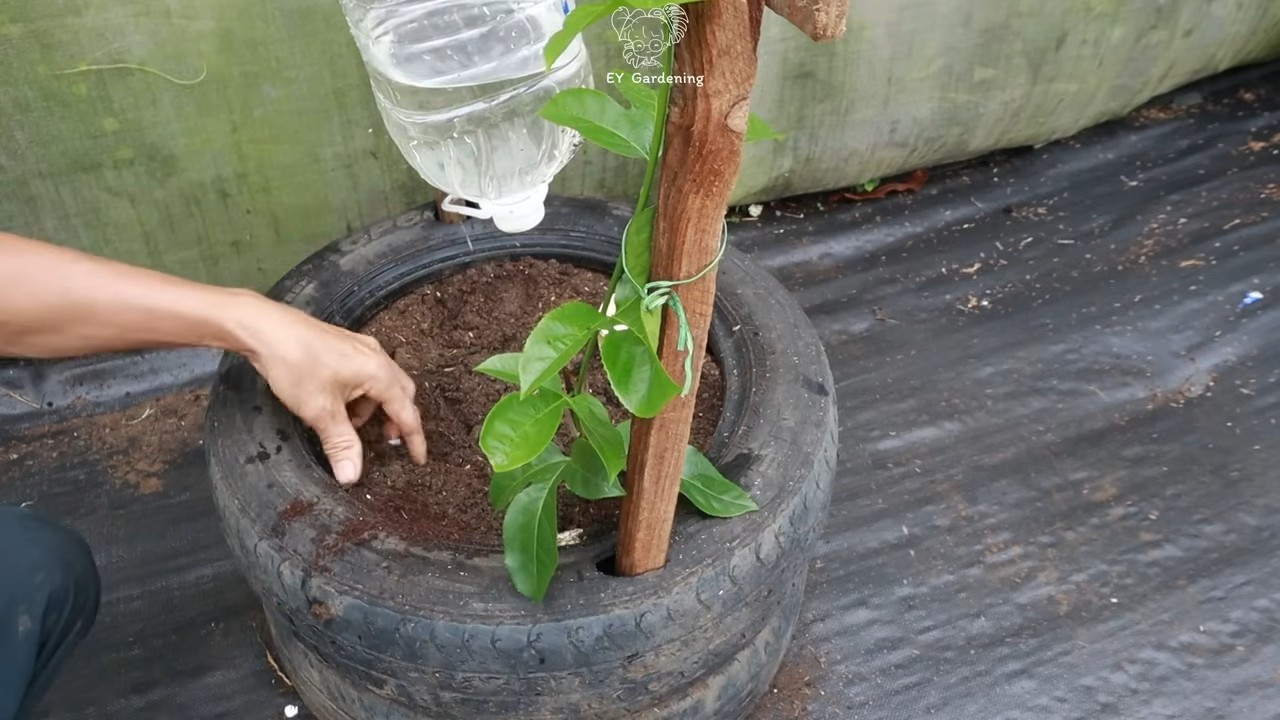
Conclusion
So, there you have it! Growing passion fruit at home isn’t just a gardening project; it’s an invitation to cultivate a little piece of the tropics right in your own backyard (or balcony!). We’ve walked through the steps, from selecting the right variety to providing the perfect support system, and hopefully demystified the process along the way.
Why is this DIY trick a must-try? Because the reward is so much greater than the effort. Imagine plucking your own sun-ripened passion fruit, bursting with tangy-sweet flavor, knowing you nurtured it from seedling to fruit. Store-bought passion fruit simply can’t compare to the vibrant taste and satisfaction of homegrown. Plus, you’ll be adding a beautiful, fragrant vine to your landscape, attracting pollinators and creating a lush, green oasis.
But the benefits extend beyond the tangible. Gardening, in general, is a fantastic stress reliever, a way to connect with nature, and a source of immense personal satisfaction. Growing passion fruit adds an extra layer of excitement, as you witness the transformation from tiny buds to exotic, edible treasures.
Don’t be afraid to experiment! Consider variations like growing passion fruit in containers if you have limited space. Choose a dwarf variety specifically bred for pots. You can also try different training methods, such as espaliering the vine against a wall or creating a cascading effect from a hanging basket. If you live in a colder climate, consider growing your passion fruit in a greenhouse or sunroom to extend the growing season.
And speaking of climate, remember to choose a passion fruit variety that’s well-suited to your local conditions. Some varieties are more cold-hardy than others, so do your research before planting.
The key to success with this DIY trick is patience and consistent care. Passion fruit vines need regular watering, fertilizing, and pruning to thrive. But with a little attention, you’ll be rewarded with an abundance of delicious fruit.
We truly believe that anyone can successfully grow passion fruit at home, regardless of their gardening experience. It’s a rewarding and enjoyable project that will bring you years of delicious fruit and beautiful foliage.
So, what are you waiting for? Grab your gardening gloves, select your passion fruit variety, and get planting! We’re confident that you’ll be amazed by the results.
And most importantly, we want to hear about your experience! Share your photos, tips, and challenges in the comments below. Let’s create a community of passion fruit enthusiasts and learn from each other. Tell us what variety you chose, what challenges you faced, and what successes you celebrated. Your insights will help other aspiring passion fruit growers on their journey. We can’t wait to see your passion fruit vines flourish! This **grow passion fruit at home** guide is just the beginning.
Frequently Asked Questions (FAQ)
What is the best time of year to plant passion fruit?
The ideal time to plant passion fruit is in the spring or early summer, after the last frost has passed. This gives the plant ample time to establish its roots and grow before the onset of winter. In warmer climates with mild winters, you can plant passion fruit year-round. However, avoid planting during the hottest months of summer, as the young plants may struggle to cope with the extreme heat.
How much sunlight does passion fruit need?
Passion fruit vines thrive in full sun, requiring at least 6-8 hours of direct sunlight per day. Adequate sunlight is crucial for healthy growth, flowering, and fruit production. If you’re growing passion fruit indoors, place it near a sunny window or supplement with grow lights. Insufficient sunlight can lead to weak growth, reduced flowering, and smaller, less flavorful fruit.
What type of soil is best for passion fruit?
Passion fruit prefers well-draining soil that is rich in organic matter. The soil should be slightly acidic to neutral, with a pH between 6.0 and 7.0. Amend heavy clay soils with compost, peat moss, or other organic materials to improve drainage and aeration. Avoid planting passion fruit in waterlogged soils, as this can lead to root rot. A good quality potting mix is suitable for container-grown passion fruit.
How often should I water passion fruit?
Water passion fruit regularly, especially during dry periods. The soil should be kept consistently moist, but not waterlogged. Water deeply, allowing the water to penetrate the root zone. Reduce watering during the winter months when the plant is less active. Overwatering can lead to root rot, so it’s important to monitor the soil moisture and adjust your watering schedule accordingly.
How often should I fertilize passion fruit?
Fertilize passion fruit regularly during the growing season (spring and summer) with a balanced fertilizer. A fertilizer with a ratio of 10-10-10 or 14-14-14 is generally recommended. Follow the instructions on the fertilizer label for application rates. You can also use organic fertilizers, such as compost tea or fish emulsion. Avoid over-fertilizing, as this can lead to excessive vegetative growth and reduced flowering.
How do I prune passion fruit?
Pruning is essential for maintaining the shape and productivity of passion fruit vines. Prune regularly to remove dead, diseased, or crossing branches. You can also prune to control the size and shape of the vine. The best time to prune is after the main fruiting season. Avoid heavy pruning, as this can reduce fruit production.
How long does it take for passion fruit to produce fruit?
Passion fruit vines typically start producing fruit within 12-18 months of planting. However, this can vary depending on the variety, growing conditions, and care provided. Some varieties may take longer to fruit, while others may produce fruit sooner. Be patient and continue to provide proper care, and you’ll eventually be rewarded with delicious passion fruit.
What are some common pests and diseases that affect passion fruit?
Passion fruit can be susceptible to various pests and diseases, including aphids, spider mites, scale insects, fruit flies, and fungal diseases like root rot and fusarium wilt. Monitor your plants regularly for signs of pests or diseases. Treat infestations promptly with appropriate insecticides or fungicides. Good cultural practices, such as proper watering, fertilization, and pruning, can help prevent many pest and disease problems.
How do I harvest passion fruit?
Passion fruit is ready to harvest when the fruit turns from green to purple or yellow, depending on the variety. The fruit will also become slightly wrinkled and have a fragrant aroma. Gently twist the fruit from the vine. Ripe passion fruit will often fall to the ground on its own. Store harvested passion fruit in a cool, dry place.
Can I grow passion fruit from seed?
Yes, you can grow passion fruit from seed, but it’s important to note that the resulting plants may not be true to type. This means that the fruit may not be exactly the same as the parent plant. To grow passion fruit from seed, collect seeds from ripe fruit, wash them thoroughly, and allow them to dry. Sow the seeds in a well-draining potting mix and keep them moist. Germination can take several weeks. Once the seedlings are large enough to handle, transplant them into individual pots.

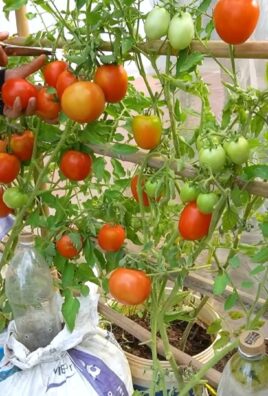
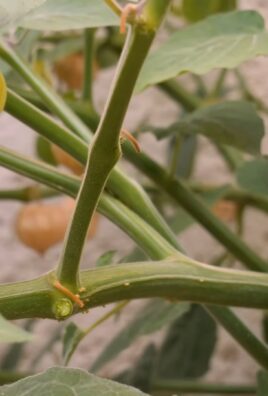
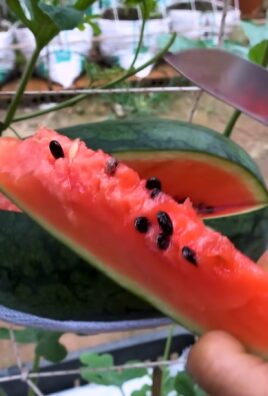
Leave a Comment